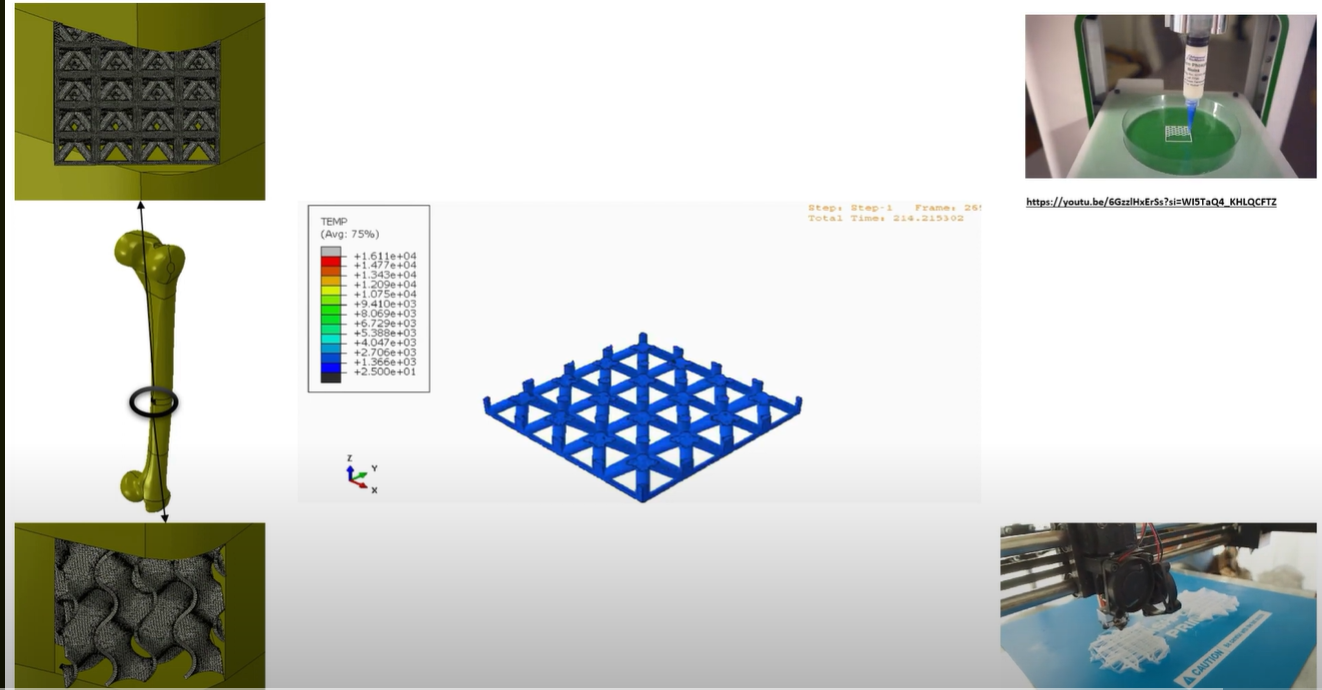Digital Healing: Numerical Simulation of 3D Printed Magnesium Bone Scaffolds for Regeneration via LDED Printing Technology
$ 300
Hi, this is Arsalan and I am back with my new project related to 3D printing in the field of biomedical engineering. Today, I will show you the details of bone scaffolds and their 3D printing, with a special focus on a magnesium-based scaffold. We’ll explore the crucial role bone scaffolds play in regenerative medicine and how 3D printing technology is revolutionizing the field. Bone scaffolds act as a support structure for bone regeneration, providing a framework for new tissue growth. 3D printing technology allows for the creation of highly customized scaffolds, tailored to the unique anatomy of each patient. This personalized approach enhances the effectiveness of the scaffold in promoting bone healing.”
Now, let’s take a closer look at the modeling process. Our journey begins with 3D modeling using Abaqus, a powerful finite element analysis software. The STL file of our magnesium bone scaffold was generated using Workbench, ensuring precision in the representation of the scaffold’s geometry. Next in line was the generation of G-codes, the instructions that guide the 3D printer in creating the physical scaffold. ReplicatorG software was employed for this task. The G-codes, which serve as the machine language for 3D printing, were then further refined using a Python script, leveraging the capabilities of the AM (Additive Manufacturing) plugin module in Abaqus. With the groundwork laid, we proceeded to simulate the 3D printing process using Abaqus. Our focus was on LDED (Layer Deposition and Extrusion Deposition) 3D printing technology, ensuring accurate representation of each layer of the scaffold. This simulation provides insights into the structural integrity, thermal aspects, and overall behavior during the printing process.”
Stay tuned for more updates on the exciting intersection of technology and healthcare.
Access to Original Files
Our packages include comprehensive design documentation, detailed analysis reports, and essential files, all readily available for download. This collection ensures that you have everything needed to replicate the project or adapt it to fit your specific needs.
Project Customization
If you’d like to improve or modify our featured project to better suit your requirements, we offer customization services. This includes adjusting design parameters, adding extra analyses, or creating variations tailored to your industry or application.
Tutoring & Consultation
Receive expert guidance on complex engineering concepts through comprehensive tutorials and live sessions, designed to help you understand and apply these subjects effectively. Our expert-led tutorials provide a clear, step-by-step guide to complex engineering concepts.
